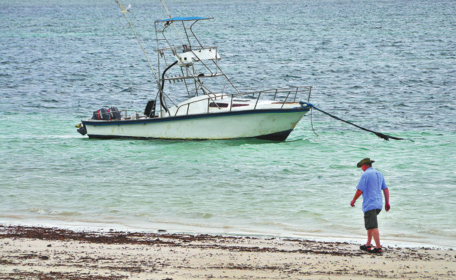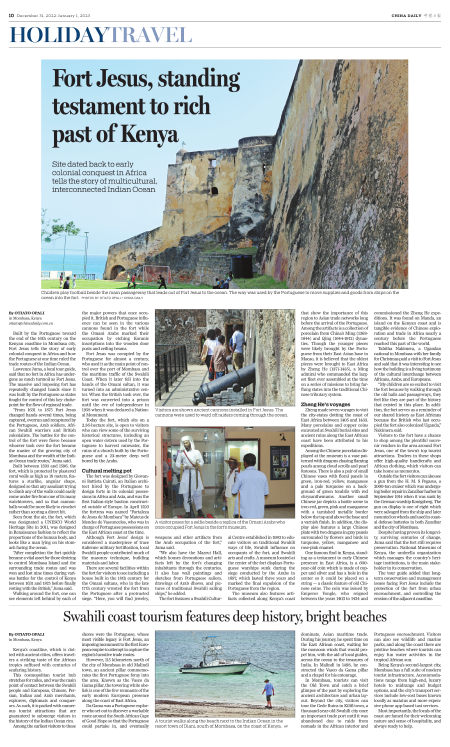
A tourist walks along the beach next to the Indian Ocean in the resort town of Diani, south of Mombasa, on the coast of Kenya.
Kenya's coastline, which is dotted with ancient cities, offers travelers a striking taste of the African tropics suffused with centuries of seafaring history.
This cosmopolitan tourist hub stretches for miles, and was the main point of contact between the Swahili people and European, Chinese, Persian, Indian and Arab merchants, explorers, diplomats and conquerors. As such, it is packed with numerous tourist attractions that are guaranteed to submerge visitors in the history of the Indian Ocean rim.
Among the earliest visitors to these shores were the Portuguese, whose most visible legacy is Fort Jesus, an imposing monument to the first European empire to attempt to capture the region's lucrative trade routes.
However, 115 kilometers north of the city of Mombasa in old Malindi town, an ancient pillar commemorates the first Portuguese foray into the area. Known as the Vasco da Gama pillar, the towering white obelisk is one of the few remnants of the early modern European presence along the coast of East Africa.
Da Gama was a Portuguese explorer who set out to discover a workable route around the South African Cape of Good Hope so that the Portuguese could partake in, and eventually dominate, Asian maritime trade. During his journey, he spent time on the East African coast, waiting for the monsoon winds that would propel him, with the aid of local guides, across the ocean to the treasures of India. In Malindi in 1498, he constructed the Vasco da Gama pillar and a chapel for his entourage.
In Mombasa, tourists can visit the Old Town and catch a brief glimpse of the past by exploring the ancient architecture and urban layout. Beyond the city, visitors can tour the Gede Ruins in Kilifi town, a thousand-year-old Swahili city once an important trade port until it was abandoned due to raids from nomads in the African interior and Portuguese encroachment. Visitors can also see wildlife and marine parks, and along the coast there are pristine beaches where tourists can enjoy fun water activities in the tropical African sun.
Being Kenya's second-largest city, Mombasa has a full suite of modern tourist infrastructure. Accommodations range from high-end, luxury hotels to midrange and budget options, and the city's transport services include low-cost buses known locally as matatus and more expensive phone app-based taxi services.
Most importantly, the locals of the coast are famed for their welcoming nature and sense of hospitality, and always ready to help.

